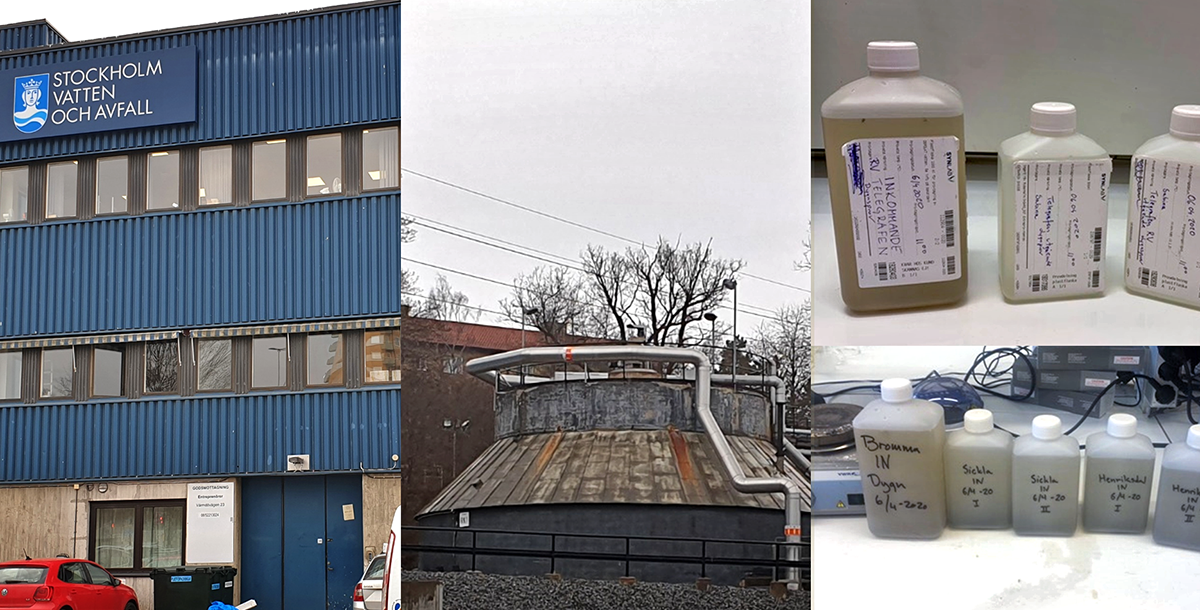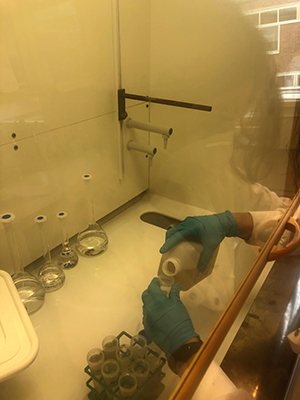Researchers sample sewage to measure infections in six European countries

The spread of the coronavirus in Stockholm and in six European countries is being tracked through sewage samples by a research group at KTH Royal Institute of Technology in Stockholm, which will report results at the end of April. The researchers believe that continuing the measurements will help provide early warning of coronavirus infections, should they return to communities later on.
Italy’s heavily-stricken northern region, as well as Catalonia in Spain, a number of cities in Turkey and India, as well as parts of the Netherlands, are all included in the biweekly sampling, says Zeynep Cetecioglu Gurol , a microbiologist and wastewater engineer at KTH. Meanwhile the rapid-response effort is quickly generating offers of more water samples, including from Sweden’s second largest city, Gothenburg.

Protocols for preparing the samples, measuring the amount of coronavirus RNA and linking the level readings to an estimate of population infected, will be offered by KTH to all partners in the countries involved. In addition, sequencing will be applied regularly to follow any potential mutation of COVID-19. Cetecioglu Gurol says the wastewater authorities outside of Sweden have asked that the researchers to not identify the specific cities where wastewater samples are taken in these countries.
Low cost way to assess pandemic's spread
David Nilsson, director of the Water Centre at KTH , which contributed the start-up financing for the project, says that in cooperation with Stockholm’s Water and Wastewater authority, wastewater samples are being collected at two main treatment plans. He says the concept provides a quick and low cost method for getting a wide angle view of the pandemic’s hold on a community.
“Our method provides significantly shorter detection time. So we can quickly get an early first warning for a second virus wave,” Nilsson says.
Co-researcher Prosun Bhattacharya says that coronavirus infection is accompanied by persistent excretion of the virus through stool, urine, human saliva, spit and cough, which are then flushed into sewage systems. “Recent reports have identified detection of SARS-CoV-2 in the wastewater at an early stage of a local outbreak. This highlights the importance of wasterwater-based epidemiology.
“With the wastewater samples, the lab is tracing the RNA fragments that are assayed through the qRT-PCR technique, once we concentrate and isolate them,” he says.

The KTH team will provide results to some of the partners, while analysis will also be performed by others. These include KWR Water Research Institute in Nieuwegein, Netherlands, which recently published the proof of concept paper in Nature showing that coronavirus could be detected in wastewater.
“Everything is going so fast,” Cetecioglu Gurol says. “After we announced the sampling, we have been receiving more samples. And the main point is, this is about the public health, not the research.
International cooperation
“The most important thing is to collaborate and share what we know, and find out what others know. If people want to join our project with samples, or do their own analysis, we are ready to share.”
Cetecioglu Gurol, whose research focuses on recovering biochemical resources from wastewater, says the next step is to prepare the samples in order to concentrate the coronavirus from the sewage. That’s more difficult to do than finding RNA in bodily fluids. “Wastewater is more complicated. There are a lot of things in it besides the virus,” she says.
The samples then undergo a multi-stage process called reverse-transcription quantitative polymerase chain reaction (RT-qPCR). This stage basically unwinds the viral RNA and converts it into DNA, which is then further replicated so there are millions of copies – enough for a quantitative PCR instrument to detect the virus.
SciLifeLab contributes the genetic sequencing
KTH researchers Anders Andersson and Professor Cecilia Williams are two of the scientists involved in sequencing the virus’ genetic material at the Science for Life Laboratory (SciLifeLab). The lab is donating hours of work using specifically-optimized diagnostic assays similar those the lab uses for clinical testing.
The final step is to develop the estimating tool, based on simulations with public health data on SARS-CoV-2, coronavirus infection and other data regarding wastewater.
The group is simultaneously sampling sludge, since Sweden and other EU countries allow it to be converted to agricultural fertilizer.
The project received its initial funding from the Water Centre at KTH , Department of Chemical Engineering at KTH, and the Department of Sustainable Development, Environmental Sciences and Engineering (SEED) at KTH.
David Callahan/Peter Larsson

